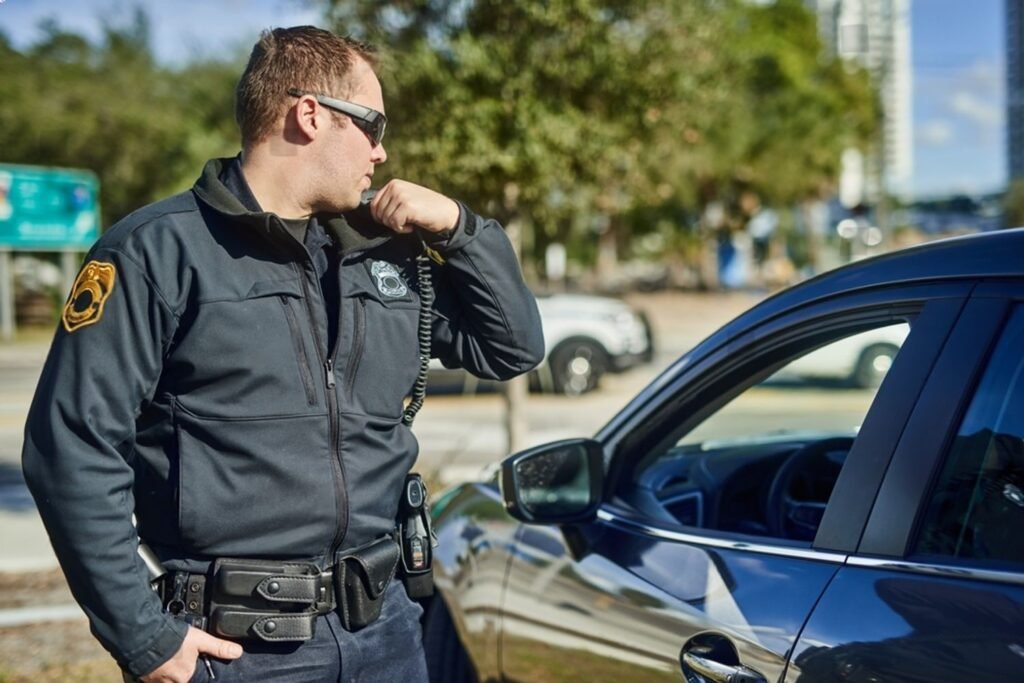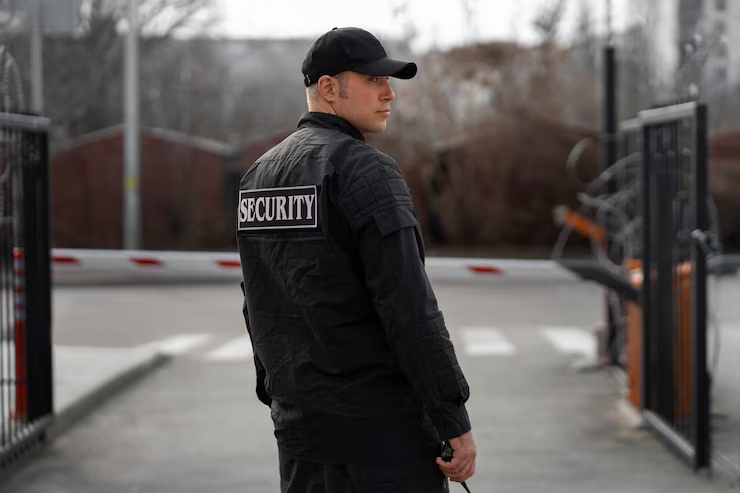
Becoming an armed security officer is a rewarding career choice that offers stability, competitive pay, and the opportunity to protect people and property. If you’re wondering how to become an armed security guard in California, this comprehensive guide will walk you through every requirement, training program, and licensing step you need to succeed.
Understanding the Armed Security Officer Role
An armed security officer is a trained professional authorized to carry a firearm while protecting assets, facilities, and individuals. Unlike unarmed security guard services, armed officers undergo extensive training and must meet stricter qualifications to handle high-risk security situations.
The demand for qualified armed security professionals continues to grow across California, with opportunities in retail security, corporate facilities, event security, and residential communities. Companies like Uniworth Security actively seek trained, licensed armed officers to provide enhanced protection services.
Armed Security License Requirements in California
California has specific armed security license requirements that every aspiring armed officer must meet. Understanding these prerequisites is your first step toward a successful career.
Basic Eligibility Requirements
Before you can pursue an armed guard license, you must meet these fundamental qualifications:
- Be at least 21 years of age
- Be a U.S. citizen or legal resident with work authorization
- Have a high school diploma or GED equivalent
- Pass a comprehensive criminal background check
- Have no felony convictions or serious misdemeanors
- Not be prohibited from owning or possessing firearms under state or federal law
- Be physically and mentally capable of performing security duties
Qualifications for Armed Security Officer Positions
Beyond basic eligibility, the armed security guard requirements include:
- Clean driving record (for many positions)
- Ability to pass a psychological evaluation
- Physical fitness to handle demanding situations
- Strong communication and observational skills
- No history of domestic violence
- Completion of drug screening tests
Meeting these armed security officer requirements demonstrates your readiness for the responsibility of carrying a firearm in a professional security capacity.
Step-by-Step Process: How to Get Your Armed Security License
Step 1: Obtain Your Guard Card
Before you can pursue armed licensure, you must first have a valid California Bureau of Security and Investigative Services (BSIS) guard card. This is the foundation for all security work in the state, including unarmed security guard services.
The guard card process includes:
- Completing a BSIS-approved 40-hour security guard training course
- Submitting fingerprints and background check
- Paying required fees
- Receiving your official guard card
Step 2: Complete Armed Security Guard Training
Once you have your guard card, the next critical step in how to get an armed guard card is completing specialized firearms training.
Required Armed Security Guard Course Components
An approved armed security guard course in California must include:
- Firearms Training: Minimum 14 hours covering weapon safety, handling, and marksmanship
- Legal Requirements: Understanding use of force laws, liability, and legal responsibilities
- Tactical Training: Threat assessment, defensive tactics, and emergency response
- Range Qualification: Live-fire exercises demonstrating proficiency with duty weapons
- Written Examination: Testing knowledge of laws, regulations, and procedures
Armed security guard classes are offered by BSIS-approved training facilities throughout California. Choose a reputable provider that offers comprehensive instruction and a range of facilities.
Step 3: Apply for Firearms Permit
After completing your armed guard training, you’ll need to apply for a firearms qualification card through BSIS. This permit specifically authorizes you to carry a firearm while on duty.
The application process includes:
- Submitting proof of completed firearms training
- Additional background screening
- Firearms qualification scores from your training course
- Payment of permit fees
- Waiting for BSIS processing and approval
Step 4: Obtain Required Certifications
Professional armed security certification demonstrates your commitment to excellence and often includes:
- CPR and First Aid Certification: Essential for emergency response situations
- Active Shooter Response Training: Specialized tactical training for critical incidents
- Conflict De-escalation: Communication techniques to resolve situations without force
- Baton and Chemical Agent Permits: Additional tools for graduated response options
Many employers, including Uniworth Security, prefer candidates with multiple certifications that demonstrate advanced capabilities.
Step 5: Maintain Your License and Continue Education
Armed security officer certification isn’t a one-time achievement. California requires:
- Annual firearms requalification at an approved range
- Continuing education courses every two years
- License renewal before expiration
- Updated background checks at regular intervals
- Compliance with all BSIS regulations
How Long Does It Take to Become an Armed Security Guard?
The complete timeline for how to get into armed security typically ranges from 3-6 months, depending on:
- How quickly you complete guard card training (1-2 weeks)
- Armed security course scheduling and availability (1-2 weeks)
- BSIS processing times for applications (6-12 weeks)
- Background check completion (4-8 weeks)
- Your personal schedule and commitment
Dedicated individuals who pursue training full-time can potentially complete the process in 2-3 months, while those balancing other commitments may need 4-6 months.
Armed Security Training Costs
Understanding the financial investment for armed certification helps you plan accordingly:
- Guard Card Training: $50-$150
- Armed Security Guard Course: $300-$600
- Firearms Permit Application: $100-$150
- Background Check Fees: $100-$200
- Additional Certifications: $50-$300 per course
- Annual Requalification: $100-$200 per year
Total initial investment typically ranges from $700-$1,400, with annual maintenance costs of $200-$400. Many security companies offer training reimbursement or assistance programs for new hires.
Choosing the Right Armed Security Officer Training Program
Not all armed security officer training programs are equal. Select a BSIS-approved school that offers:
Quality Instruction
- Experienced instructors with law enforcement or military backgrounds
- Small class sizes for personalized attention
- Modern facilities and up-to-date curriculum
- Positive student reviews and success rates
Comprehensive Curriculum
- Thorough coverage of California laws and regulations
- Extensive range time with various firearms
- Realistic scenario-based training
- Written and practical examination preparation
Career Support
- Job placement assistance upon completion
- Relationships with local security companies
- Resume and interview preparation
- Continuing education opportunities
Career Opportunities After Certification
Once you’ve completed armed guard certification, numerous career paths open up:
Armed Security Guard Services
Work with established security firms like Uniworth Security providing:
- Armed patrol services for commercial properties
- Executive protection for high-profile clients
- Event security for large gatherings
- Construction site protection
- Retail loss prevention with enhanced security
Specialized Security Positions
Advanced opportunities include:
- Personal protection specialist (bodyguard)
- Armored car guard
- Court security officer
- Nuclear facility security
- Government building protection
Career Advancement
Experienced armed security officers can progress to:
- Security supervisor and team leader roles
- Training instructor positions
- Operations manager
- Private investigator
- Law enforcement careers
What Makes a Successful Armed Security Officer?
Beyond meeting the armed security requirements, successful officers possess:
Professional Attributes
- Vigilance: Constant awareness of surroundings and potential threats
- Judgment: Ability to assess situations and respond appropriately
- Communication: Clear, professional interaction with clients and the public
- Integrity: Ethical behavior and trustworthiness with firearms
- Physical Fitness: Capability to respond to emergencies and pursue suspects
Technical Skills
- Marksmanship: Accurate and safe firearm handling
- Defensive Tactics: Physical control techniques when needed
- Report Writing: Detailed documentation of incidents
- Technology: Proficiency with security systems and communication devices
- Emergency Response: Calm, effective action during critical situations
Armed vs. Unarmed Security: Understanding the Difference
While unarmed security guard services focus on observation, reporting, and deterrence, armed officers carry additional responsibilities:
Armed Security Advantages
- Higher earning potential ($18-$35+ per hour in California)
- More career advancement opportunities
- Greater responsibility and professional recognition
- Access to high-security assignments
- Enhanced ability to respond to serious threats
When Armed Security is Required
Certain environments specifically need armed security guard services:
- High-value asset protection (jewelry stores, banks)
- Locations with elevated threat levels
- Executive and VIP protection details
- Cannabis facilities and dispensaries
- Construction sites with expensive equipment
California-Specific Armed Security Regulations
California maintains some of the nation’s strictest firearm regulations, which directly impact how to get an armed guard license in the state:
Approved Firearms
Armed officers in California can only carry firearms approved by their employer and BSIS, typically:
- 9mm semi-automatic pistols
- .38 Special revolvers
- .40 S&W semi-automatic pistols
- .45 ACP semi-automatic pistols (less common)
Duty Weapon Requirements
- Must qualify with the specific make and model you’ll carry on duty
- The weapon must be properly registered and legally owned
- Regular maintenance and inspection are required
- Ammunition must meet department specifications
Use of Force Standards
California law requires armed officers to understand:
- Reasonable force principles
- Escalation and de-escalation procedures
- Legal justification for displaying or using a firearm
- Liability and consequences of improper weapon use
- Reporting requirements for any use of force incident
Common Challenges and How to Overcome Them
Background Check Issues
If you have concerns about your criminal history:
- Minor offenses may not disqualify you
- Time has passed since the incident matters
- Be completely honest on applications
- Consider expungement for eligible offenses
- Consult with BSIS for specific situations
Firearms Qualification Anxiety
Many students worry about passing the range qualification:
- Practice dry-fire exercises at home
- Take additional range time before testing
- Focus on fundamentals: stance, grip, sight picture
- Breathe and stay calm during the qualification
- Most programs offer retest opportunities
Financial Barriers
Training costs can seem daunting:
- Look for employer-sponsored training programs
- Check for veteran benefits and grants
- Consider payment plans offered by schools
- Research scholarships for security training
- Remember, the investment pays off quickly with higher wages
Continuing Your Armed Security Education
Professional development doesn’t stop with initial certification. Consider advanced training in:
Specialized Skills
- Close Protection/Executive Protection: Advanced bodyguard techniques
- Tactical Response: Active shooter and threat neutralization
- Surveillance and Counter-Surveillance: Detection and Prevention Methods
- Crisis Management: Leadership during emergencies
- Investigation Techniques: Evidence collection and case management
Additional Certifications
Enhance your credentials with:
- California Private Investigator License
- Advanced firearms instructor certification
- Tactical emergency medical care
- Canine handling for security dogs
- Drone operation for aerial surveillance
Finding Employment as an Armed Security Officer
Once you’ve obtained your armed security guard certification, finding the right position is your next step:
Job Search Strategies
- Apply directly to established security companies like Uniworth Security
- Network with other security professionals
- Attend security industry job fairs
- Join professional security associations
- Utilize online job boards specializing in security positions
Resume and Interview Tips
- Highlight all relevant training and certifications
- Emphasize any military, law enforcement, or security experience
- Demonstrate knowledge of California security laws
- Show commitment to ongoing professional development
- Present yourself professionally in appearance and demeanor
What Employers Look For
Security companies value candidates who demonstrate:
- Reliability and punctuality
- Professional appearance and communication
- Flexibility with scheduling and assignments
- Commitment to following procedures
- Ability to work independently and as part of a team
The Future of Armed Security in California
The armed security industry continues to evolve with:
Growing Demand
- Increased security concerns are driving higher demand
- Cannabis industry creating new opportunities
- The tech sector requires enhanced facility protection
- Event security needs expanding
- Residential security services are growing
Technology Integration
Modern armed officers must adapt to:
- Advanced surveillance systems
- Mobile reporting applications
- Biometric access controls
- Drone technology
- AI-assisted threat detection
Professional Standards
The industry is moving toward:
- Higher training requirements
- More rigorous certification standards
- Enhanced continuing education
- Greater accountability and professionalism
- Better compensation and benefits
Frequently Asked Questions
How can I get my armed security license quickly?
The fastest path is to immediately start your guard card training while preparing for background checks. Complete both processes simultaneously to minimize waiting time. Choose training providers with the next available armed security guard classes rather than waiting for a specific date.
Can I work as armed security with a criminal record?
It depends on the nature and timing of offenses. Felonies typically disqualify you, while minor misdemeanors may be acceptable after a waiting period. BSIS evaluates each case individually. Complete honesty in your application is essential.
Do I need my own firearm for training?
Most armed security officer training facilities provide firearms for the course. However, if you plan to carry your personal weapon on duty, you must qualify with that specific firearm. Check with your training provider about their policies.
How often must I requalify with firearms?
California requires armed security officers to requalify annually at a minimum. Many employers require more frequent qualifications, such as quarterly or semi-annually, to maintain employment eligibility.
What’s the salary range for armed security officers in California?
Entry-level armed security officers typically earn $18-$22 per hour. Experienced officers with specialized training can earn $25-$35+ per hour. Supervisory positions may exceed $40 per hour. Benefits vary by employer.
Can I carry my off-duty security firearm?
No. Your armed guard certification authorizes the carry of firearms only while on duty in your official capacity. Off-duty carry requires a separate California CCW permit, which has different requirements and is discretionary by county.
Take the First Step Toward Your Armed Security Career
Now that you understand how to become an armed security officer in California, it’s time to take action. The path requires dedication, training, and commitment to professional standards, but the rewards—both personal and financial—make it worthwhile.
Your Action Plan
- This Week: Research BSIS-approved training schools in your area
- This Month: Enroll in guard card training and begin the background check process
- Next Month: Complete guard card and schedule armed security course
- Following Months: Finish firearms training, submit permit applications, and begin job search
Partner with Uniworth Security
Uniworth Security is committed to developing the next generation of professional armed security officers. We offer:
- Competitive starting wages and comprehensive benefits
- Opportunities across various armed security guard services
- Career advancement pathways
- Ongoing training and professional development
- A supportive team environment
Whether you’re interested in armed security guard services or transitioning from unarmed security guard services, we’re here to support your career growth.
Start Your Journey Today
Don’t wait to begin this rewarding career. Research approved training programs, prepare your application materials, and take the first step toward becoming a certified armed security officer in California.
The security industry needs dedicated professionals like you who are willing to meet the armed security officer requirements, complete rigorous training, and commit to protecting others. Your community is safer because of officers who take this responsibility seriously.
Ready to make a difference? Your armed security career starts now.


